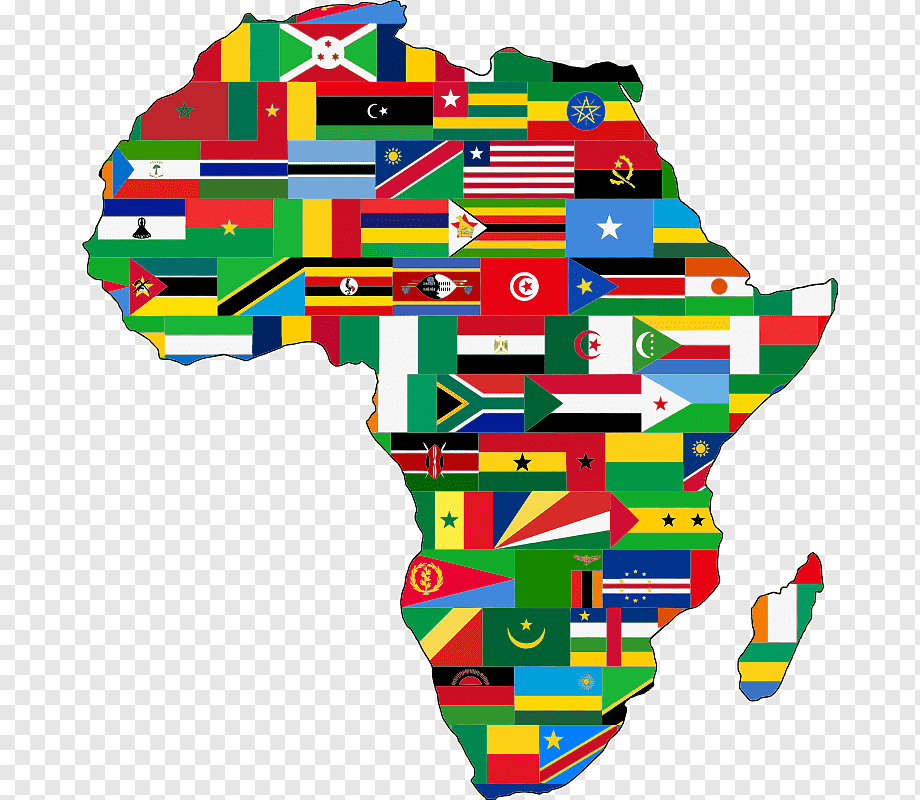Africa’s flags have been used as common symbols in history for over 5,000 years. Flags in general have been used dating as far back as 3000 BC with a metal Iranian flag and flag representation in Egyptian tomb carvings. Vexillology (the study of flags),takes its literal meaning from the Latin word for “guide,” a meaning which continues to carry weight in the use of flags today.
In October 1993, Bruce Berry sat in a room with seven others at the World Trade Centre in Kempton Park near Johannesburg. They had an important job to do. The Zimbabwean-born was part of the “technical committee” tasked with sifting through over 7,000 submissions to find the perfect design for South Africa’s new post-democracy flag. What they wanted was something unique; what the country needed was something that would promote national unity. There was a shortlist of 130 submissions that was eventually cut down to six. All were rejected by the National Symbols Commission.

A further call was put out to advertising and design agencies, many who used symbols like doves and protea flowers, says Berry. “These designs were referred to the Bureau of Heraldry for evaluation, which found that the majority of the designs had no potential,” he says. They simply did not meet international standards, displayed poor aesthetics, and had too much detail.
A GOOD FLAG, HE SAYS, “SHOULD BE ABLE TO BE DRAWN BY SCHOOL CHILDREN.”
With a one-week deadline, state herald Frederick Gordon Brownell came up with what we now know as one of the most recognisable of Africa’s flags, the South African national flag. Berry explains that Brownell combined the colors used in the country’s previous flags to represent the white population, with the colors of political parties such as the African National Congress (ANC) and the Pan Africanist Congress (PAC) to represent the black population. At the time, it was the only flag in the world to have six colors in its primary design, including chili red, blue-black, and spectrum green. South Sudan is now the only other.
As the creation of South Africa’s flag reveals, deciding on the perfect flag can be a lengthy process. It is the flag, after all. When you consider its importance—how many times it will be flown, how many people from around the world will see it, how many different ways its design and symbols will be interpreted—it’s expected that sufficient thought and effort is given when making the choice. Evolved from its initial use during wars to coordinate soldiers on the battlefields, modern country flags serve as a form of identification. “No where in world does it say that a country should have a flag, but every country has one,” says Berry.

And every one tells a story. Somalia’s pays homage to the United Nations. Reportedly designed in less than 24 hours, its creator Mohammed Awale Liban is quoted as saying, “The blue color stands the United Nations, who help us to reach our dream of independence; white means peace and prosperity; and the star is the five regions of the Somali people.”
Inspiration can come from other countries, too. If you look at the flag of many African countries, you’ll notice the repeated use of what’s known as “Pan-African colors,” of which there are two sets—black, red, and green, and red, yellow, and green. The latter combination was popularised by Ethiopia, one of the few African countries that—though once occupied by Italy—was never colonized.

Ghana (left) was the first to borrow from the East African country after gaining independence in 1957. They added a black star, which is popularly believed to represent the lone star of African freedom as they were the continent’s first state to achieve independence. Others say it represents the Black Star Line—the now defunct state-owned shipping company that took its name from the one owned by Marcus Garvey, Jamaican political leader ,and social activist. Guinea-Bissau followed the color trend in 1973. Later so did Senegal, Mali, and Cameroon, among others.
There’s also those that will have you doing a double-take. Chad and Romania are identical, bar for slightly different shades of blue. Back in 2004, there were even reports that the central African country lodged a complaint with United Nations to evaluate the similarities. Both still use the same flag.
There’s also Liberia. The country’s flag is red, white, and blue. It has a star and stripes. Sound familiar? It’s almost an exact replica of the United States flag. Its has nothing to do with design envy, rather revealing the two’s close historical ties. Freed black American slaves were sent to parts of the African continent, including Liberia, where they started colonies. The similarity was how so-called “Americo-Liberians” honored of their country of birth.
“As human beings we like having something tangible,” says Berry. It’s perhaps also about a sense of ownership, of pride, of belonging. For some, maybe more, so when we venture beyond our borders. I for one immediately feel a sense of comfort when I see my country’s flag, the South African flag, when I’m in other parts of the world. I am comforted by its presence. It represents home, my home.
“It’s also practical—quick, easy, and cheap to make,” Berry says. A founding member of the Southern African Vexillological Association (SAVA), Berry has over 3,000 flags in his private collection. If you were to pass his house, you’re guaranteed to see one of them on the flag-post outside. Could he possibly choose a favourites? “By default, I have to say South Africa,” he says. “If you think back to 1993, it was a unifying symbol. It is a good flag.”

